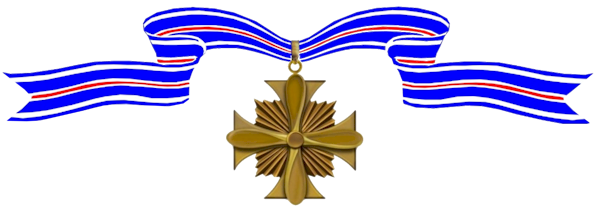The President of the United States of America, authorized by Act of Congress, July 2, 1926, takes pride in presenting a Bronze Oak Leaf Cluster in lieu of a Second Award of the Distinguished Flying Cross (Posthumously) to Captain (Infantry) George Hartwell Adams, United States Army, for heroism while participating in aerial flight evidenced by voluntary action above and beyond the call of duty on 12 April 1970, while serving as an Aircraft Commander with the Air Cavalry Troop, 11th Armored Cavalry Regiment, in the Republic of Vietnam. On this date, Captain Adams was flying a reconnaissance mission over known areas of enemy activity. While making several low level passes over the dense jungle his craft began to receive intense ground fire, which struck his craft several times. Realizing that the aircraft’s control system was damaged severely and a crash was inevitable he maneuvered the helicopter into a landing position which would provide the crew with a better chance of escaping even though he sacrificed his own life. During this period Captain Adams notified nearby helicopters of the enemy’s location so that they could provide suppressive fire while the crew was being rescued. His quick reactions resulted in the saving of four men’s lives. Captain Adams’ actions were in keeping with the highest traditions of the military service and reflect great credit upon himself, his unit and the United States Army.

Awards Received
-

Distinguished Flying Cross
-
Distinguished Flying Cross
Service:
United States ArmyRank:
First Lieutenant (Infantry)Regiment:
11th Armored Cavalry RegimentAction Date:
August 9, 1969
Headquarters, II Field Force Vietnam, General Orders No. 3068 (October 23, 1969)The President of the United States of America, authorized by Act of Congress, July 2, 1926, takes pleasure in presenting the Distinguished Flying Cross to First Lieutenant (Infantry) George Hartwell Adams, United States Army, for heroism while participating in aerial flight evidenced by voluntary action above and beyond the call of duty on 9 August 1969, while serving as Platoon Leader of an Aero Rifle Platoon of the Air Cavalry Troop, 11th Armored Cavalry Regiment, in the Republic of Vietnam. On this date, he was informed that a squad of the troop’s Aero Rifle Platoon was needed to make a search of an area in which several enemy troops had been sighted. When he learned that there were no landing zones large enough for a regular troop helicopter, Lieutenant Adams volunteered to strip down his light observation helicopter and use it to carry the troops. Despite intense enemy automatic weapons fire directed at his unarmed and heavily-loaded aircraft, he safely inserted four members of the squad into the hazardous landing zone. Although the main and tail rotor blades of the helicopter had been damaged by limbs surrounding the landing zone, he set his aircraft down two more times to extract prisoners captured by the friendly element and to remove the ground troops from the enemy-infested area before they could be attacked by a numerically superior force. First Lieutenant Adams’ courage and determination were in keeping with the highest traditions of the military service and reflect great credit upon himself, his unit and the United States Army.

